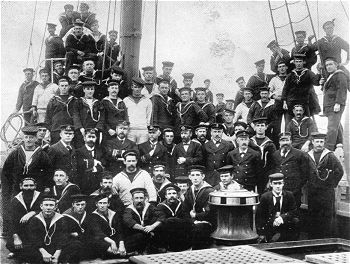|
Coastwatcher
The Coastwatchers, also known as the Coast Watch Organisation, Combined Field Intelligence Service or Section C, Allied Intelligence Bureau, were Allied military intelligence operatives stationed on remote Pacific islands during World War II to observe enemy movements and rescue stranded Allied personnel. They played a significant role in the Pacific Ocean theatre and South West Pacific theatre, particularly as an early warning network during the Guadalcanal campaign. Overview Captain Chapman James Clare, district naval officer of Western Australia, proposed a coastwatching programme in 1919. In 1922, the Australian Commonwealth Naval Board directed the Naval Intelligence Division of the Royal Australian Navy to organise a coastwatching service. Walter Brooksbank, a civil assistant to the Director of Naval Intelligence, worked in the 1920s and 1930s to organise a skeleton service of plantation owners and managers whose properties were in strategic locations in northern Austra ... [...More Info...] [...Related Items...] OR: [Wikipedia] [Google] [Baidu] |
Eric Augustas Feldt
Commander Eric Augustas Feldt (3 January 1899 – 12 March 1968) was an officer in the Royal Australian Navy and the director of the Coastwatchers organisation for much of the Second World War. Early life Feldt was born in Ingham, North Queensland, on 3 January 1899, the eighth child of Swedish immigrants, Peter Nilsson Feldt, a cane farmer, and Augusta Blixt. Feldt attended the local school before winning a scholarship to Brisbane Grammar School where he boarded for a year. He then won selection for the first intake of cadets into the Royal Naval College in 1913, being the only cadet from Queensland. He graduated as a midshipman in 1917 and sailed to England in April 1917 where he initially served on HMS Canada. He was promoted to lieutenant in February in 1920. In 1922 he left the Navy and was placed on the retired list. In February 1923, Feldt became a clerk in the public service of the mandated Territory of New Guinea. He rose to a patrol officer and then to district o ... [...More Info...] [...Related Items...] OR: [Wikipedia] [Google] [Baidu] |
RANVR
Royal Australian Naval Volunteer Reserve (RANVR) was a reserve force of the Royal Australian Navy. Formation In late 1920, the Navy Board proposed the creation of an Royal Australian Naval Volunteer Reserve scheme, with approaches made to yachting and rowing clubs, starting in New South Wales, South Australia, Victoria, and Tasmania. Men who were undergoing or liable to compulsory training under the ''Defence Act'' (Cwlth) were ineligible for enrolment. For the volunteers, a period of five years of service was proposed with parading twice a month, training occur outside of business hours, entry as an able seaman rating, and officer appointments not based on social or other positions. Requirements later included fourteen days training every alternate year, and 'seven days out of this period should be spent afloat'. By 1925, following mufti attire on parades, the uniform was determined to be the same as the regular forces, with 'RANVR' replacing 'RANR' on the cap band, and th ... [...More Info...] [...Related Items...] OR: [Wikipedia] [Google] [Baidu] |
Chapman James Clare
Chapman James Clare (23 June 1853 – 28 September 1940) was a British sailor who worked on merchant vessels, then on Australian government ships, and after formation of the Royal Australian Navy as a senior naval officer. He served during the Boxer Rebellion (1899–1901) and World War I (1914–1918). It was on his suggestion, 1919, that a Coastwatchers organisation should be established. The coastwatchers played an important role during World War II. Early years Chapman James Clare was the son of James Coughron Clare, a merchant ship master. He was born on his father's ship ''Matilda Wattenbach'' on 23 June 1853 in the Bay of Biscay. His father became a lieutenant in the Royal Naval Reserve. Clare was educated in private schools in England at Cheshunt and Municipal Borough of Edmonton, Edmonton. When Clare was fifteen he joined Smith, Fleming & Co. of London as a merchant marine apprentice, and worked on sailing ships for the next five years. In 1873 Clare became mate on a s ... [...More Info...] [...Related Items...] OR: [Wikipedia] [Google] [Baidu] |


